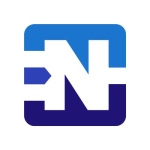What is our primary use case?
The solution is more towards the front of the security stack.
We use both AWS and Alibaba Cloud.
How has it helped my organization?
The single pass architecture has helped a lot in the implementation and maintenance of Palo Alto Networks. It changed the customer's opinion on UTM platforms. In the past, when customers used UTM platforms, they feared the security features would impact the performance and slow down the network, causing some instability. However, with the single pass architecture, Palo Alto has demonstrated that you can use a lot of the security features without having an impact on the security and network performance. Therefore, most of our customers will dare to use most of Palo Alto Networks' security features.
What is most valuable?
- Application identification
- Antivirus
- Vulnerability protection
- URL filtering
- SSL VPN
- IPsec VPN
Palo Alto NGFW provides a unified platform that natively integrates all security capabilities. Most of our customers are busy. They cannot afford the time to learn very complicated user interfaces and configuration procedures. With Palo Alto Networks, they offered a unified user interface for all its NG Firewall products and Panorama. I think it reduces some of our customers' maintenance time.
Palo Alto NGFW’s unified platform has helped our customers eliminate security holes. With a unified platform, customers can deploy the NG Firewall both in the data center edge, inside the data center, and in the product/public cloud environments. They have the same user interfaces and platform, so they can be maintained by a single unified platform called Panorama. Customers can use Palo Alto Network NG Firewalls in all the places where they need to protect their environments. This helps to decrease security holes.
What needs improvement?
Over the past one or two years, Palo Alto Networks has added a lot of features into the NG Firewall products. I think this is becoming more complicated for our customers. Therefore, we could use some best practices, best practice tools, and implementation guides for some of the complicated features.
For how long have I used the solution?
I have been using it for eight years, though my company does not use it.
What do I think about the stability of the solution?
Compared to its competitors, the stability of NG Firewalls is very good. We have faced some strange problems with the hardware platform or operating system. Most of these customer cases come from complicated configs and bugs. However, stability is very good overall.
What do I think about the scalability of the solution?
Scalability is not that good. Palo Alto Networks NG Firewalls product is for middle-sized and small businesses. It has fixed parts and capacities for processing. Some of their higher-end products have the scalability to expand capacities, but only a few customers can afford their larger product.
How are customer service and technical support?
I would rate it as eight to nine out of 10. Most of the technical engineers, who provide support for our customers, are efficient. There are one or two Tier 1 tech support engineers who often don't have answers.
Which solution did I use previously and why did I switch?
Palo Alto NGFW’s unified platform has helped to eliminate multiple network security tools and the effort needed to get them to work together with each other. Before using Palo Alto Networks NG Firewalls, customers might need to implement Layer 4 firewalls, IPS and possibly an antivirus, gateways, and maybe web proxies for all their devices. With Palo Alto NGFW’s unified platform, if a customer can do all the config and security policies on one platform, then this will merge all their security things onto a single platform.
How was the initial setup?
The initial setup is not complex; it is straightforward. Our users only need a cable and some basic steps to configure the management interface. Then, it can set up the NG Firewall and ensure that the network and routing are working as expected in the environment. I think its steps are easier than most of its competitors. The initial setup takes one or two hours.
The full setup time depends on the features, then whether the environment or customer needs are complicated or not.
What about the implementation team?
For our implementation strategy, we talk to our customers and work out documents for all their configs, which includes basic information that we need to know for implementing the firewall. Then, we follow the documents and do the implementation. We also may modify some content of the documents as the project processes.
It needs one or two employees with enough skills to manage and maintain it. They may need to modify firewalls, firewalls security rules, and possibly inspect alerts that are generated from firewalls.
What was our ROI?
By having a customer operate on a unified platform, they can do the application control, traffic control, threat protection, and URL filtering on a single platform. This effectively reduces the workload on all their networks and security tools.
Cheap and faster are the opposite sides of security. Security inspections have some technical and money costs. If you just purchase some cheap, fast firewalls, then you will lose a lot of the security features and fraud protection capabilities.
Which other solutions did I evaluate?
My company uses Cisco Firepower NGFW Firewall, not Palo Alto Networks NG Firewalls. We started our cooperation with Cisco a lot longer than with Palo Alto Networks. We have been working with Cisco to expand their business in China for more than 20 years, which is why the leaders in our company might be choosing Cisco products.
Most of our customers have been using Palo Alto Networks for a long time and do not want to change to another vendor. The unified user interface is a big benefit for them.
Palo Alto NGFW’s DNS Security is an effective way to detect and block DNS tunneling attacks, because most competitors do not have these techniques to detect the DNS tunneling on a single device. They require maybe a SIM or some analysts. So, this is something quite creative for Palo Alto Networks.
What other advice do I have?
For our customers, I would tell them that Palo Alto Networks NG Firewalls is easy to use, but probably difficult to master. It has a very easy to use interface and configuration utility, but it has a lot of advanced features that need some deep knowledge of the product.
No product can guarantee 100% evasions being blocked, but I think Palo Alto is among the top of the threat inspection vendors. From the NSS Labs Test Report, we can see that Palo Alto Networks always has a top score.
Machine learning in a single firewall is not that accurate or important for our customers. Since it will only see some network traffic, it cannot connect everything together, like endpoints and servers. Therefore, our customers do not value the machine learning techniques on a single firewall very much.
We may review the alerts generated by machine learning modules, then we can see if the alerts are real alerts, not false positives. This may tell us how efficient machine learning is.
Very few customers in China have used the Palo Alto NGFW’s DNS Security module. It is a new feature that was introduced only two years ago. Customers already know what the product can provide in terms of protection. Its DNS Security provides something that is not really easy to understand. Also, it increases the cost of the firewall because it requires another license to be implemented, and the cost is not low.
DNS Security is very impressive, and I think it will be an efficient way to block the rapidly changing threat landscape and maybe Zero-day attack methods.
Biggest lesson learnt: If you want to protect something, you need to gain visibility of the entire network. NG Firewalls provides a deep visibility into network traffic.
I would rate Palo Alto Networks NG Firewalls as nine out of 10.
Which deployment model are you using for this solution?
Public Cloud
If public cloud, private cloud, or hybrid cloud, which cloud provider do you use?
Amazon Web Services (AWS)
Disclosure: My company has a business relationship with this vendor other than being a customer. Reseller












